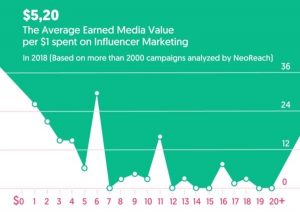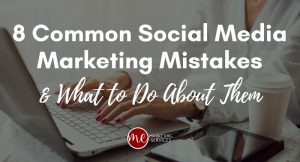There are plenty of things in life that can be done purely by scientific methods, that can be proven time and time again to yield the same consistent results. Social media marketing success does not fall into that category. Sorry if that’s a downer, but it;s the truth.
Social media is much more like meteorology. Yeah, those guys who seem to be able to keep a job even if they’re wrong a lot more often than we’d like. There’s science involved in predicting the weather, but the unknown variables in the mix always leave plenty of room for error and reassessing, and controlling those variables is just as impossible as – to stay with the weather analogies and add an old country music album title – roping the wind.
Don’t Give Up

Just because you can’t nail down a once-and-for-all formula for social media marketing success doesn’t mean you should give up on it, or that you should forgo any scientific method at all and just market by throwing darts at the board and seeing what happens.
Since it’s not a hard science, it falls under the category of an art, but the art of social media still needs you to use whatever scientific data you can to get that dart as near the bullseye as possible. Which is why some outlet seems to come out with new data almost every week about who sees, likes, and shares what on sites like Facebook.
We’ve discussed this from different angles in the past, particularly mentioning certain data that shows how you should be engaging 70-80% of the time and only promoting in about one out of every five posts. That formula still holds true according to the data, but what about the stuff you’re actually posting? What does your mix of posts look like? There seems to be a lot of consensus on this aspect as well. Let me give a suggestion for Facebook postings, based on a lot of different data.
Mix It Right
The biggest non-secret in social media these days is that visuals work. Find me anyone who suggests ditching photos and videos for straight text posts and I’ll show you someone who is quickly fading into obscurity, if not ridicule.

First, let’s look at a variation on the percentages. One suggestion is that 50% of your posts be for engagement, which might seem a little low to some. However, that doesn’t mean that the other 50% is selling. 30% should actually be branding according to this formula, so getting your name more recognized without asking for business. The last 20% (still one in five) is for conversions, or directly asking for business.
Think of branding as meeting someone and getting them to like you, engagement as taking your relationship to a deeper level and getting them to love you, and conversion as using your connection with them to influence them and convert them to customers. Below I’ve laid out a plan of attack for you to try on Facebook, but first a little reality check.
Your best social media plan will be different than others’. Your clients are your clients, and there is no way that anyone else can know with any certainty how that group will react to something. That is exactly why A/B testing needs to be an ongoing strategy and why you need the best data collection tools and engagement tools you can find to measure your results. (hint: all you need is Sendible’s social media dashboard) So no matter what advice you take on strategy from me or anyone else, there is no replacement for good measurement.
The Right Mix(?)

First of all, post to Facebook three times each day. That’s enough to keep you in news feeds without overwhelming anyone. Use analytics to determine the best times for posting, then adjust those times as you get more data.
With those three posts, try one that is text, one with a link to your content or content related to your niche, and one that is either a photo or video.
Text posts are purely for engagement, so make them engaging! Ask questions that readers will answer in the comments (if you did blah blah blah, what would you blah blah blah?), keep the text to 80 characters or below if possible (not over 120), and of course answer any comments that you need to and can.
Links are primarily for driving traffic to your website or blog. You want clicks, not so much likes and shares. Any engagement is good, but links should build up your own traffic. To add to the possibility of engagement and clickthroughs, add a question or statement to nudge them. If the link is content about weight loss for instance, ask of they have any weight loss goals right now or tell them to “click here to lose five pounds quickly”.
Photos should beg to be liked, shared, and commented on. Photos – good photos, of course – are your secret weapon. People love to see them, share them, and talk about them. “Caption this photo” posts are almost like shooting fish in a barrel. Just please lay off the cats.
Videos should be short and very engaging, or they’ll scroll right past. Good videos that grab attention are solid gold, though. Don’t leave them out of the mix.
Start with one text, one link, and either a photo or video every day, and mix up the order. It won’t take long to find which times of day work best for you if you’re consistently measuring.
I’m just throwing out a quick and dirty formula for you to try here. Your results may vary, but that’s why you’re measuring and adjusting as you go to fine tune your strategy. Everyone needs a starting place, and if you didn’t have one before then you do now.
(222)







